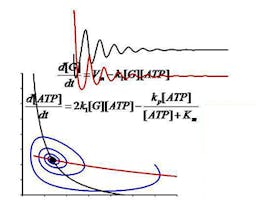Have you ever experienced software systems failing? Websites crash, calendar not synchronising, or even a power blackout. Of course you have! But did you know that many of these errors are the result of communication errors either within a system or between systems? Depending on the system, the impact of software failures can be huge, even resulting in massive economic damage or loss of lives. Software, and in particular the communication between software-intensive systems, is very complex and very difficult to get right. However, we need dependability in the systems we use, directly or indirectly, to support us in our everyday lives.



System Validation: Automata and behavioural equivalences

Instructor: Jan Friso Groote
Sponsored by Pontificia Universidad Católica del Perú
11,093 already enrolled
(182 reviews)
Skills you'll gain
Details to know

Add to your LinkedIn profile
3 assignments
See how employees at top companies are mastering in-demand skills


Earn a career certificate
Add this credential to your LinkedIn profile, resume, or CV
Share it on social media and in your performance review

There are 3 modules in this course
System Validation is the field that studies the fundamentals of system communication and information processing. It allows automated analysis based on behavioural models of a system to see if a system works correctly. We want to guarantee that the systems does exactly what it is supposed to do. The techniques put forward in system validaton allow to prove the absence of errors. It allows to design embedded system behaviour that is structurally sound and as a side effect enforces you to make the behaviour simple and insightful. This means that the systems are not only behaving correctly, but are also much easier to maintain and adapt.’Automata and behavioural equivalences' shows you how to look at system behaviour as state machines. It discusses behavioural equivalences and illustrate these in a number of examples and quizzes. This module introduces automata or labelled transition systems as the basic way to model the behaviour of software controlled systems. It subsequently addresses the question when such behaviours are equivalent. Reading material. J.F. Groote and M.R. Mousavi. Modeling and analysis of communicating systems. The MIT Press, 2014.
What's included
5 videos1 reading1 assignment
This module shows the most important equivalences that express when the behaviour of two automata can be considered to be equivalent. It will become obvious that there are multiple of such notions, all fit for use under different circumstances. Furthermore, the all-important notion of the internal or hidden action is introduced with some associated behavioural equivalences.
What's included
6 videos2 readings1 assignment
This module elaborates on the equivalences provided earlier. It is shown how it can be applied, especially to the alternating bit protocol. Furthermore, a number of additional equivalences are introduced.
What's included
7 videos1 assignment
Instructor

Offered by
Why people choose Coursera for their career




Learner reviews
182 reviews
- 5 stars
65.93%
- 4 stars
18.13%
- 3 stars
10.98%
- 2 stars
3.29%
- 1 star
1.64%
Showing 3 of 182
Reviewed on May 27, 2020
Good course on Automata and behavioural equivalences.
Reviewed on Apr 10, 2023
Good to learn new things. the recorded sound quality is not too clear. However I managed to learn from the professor a lot.
Reviewed on Oct 13, 2016
I've learn more thing's in this course..., thank you Coursera :) :) :)
Recommended if you're interested in Computer Science

Icahn School of Medicine at Mount Sinai

Nanyang Technological University, Singapore

DeepLearning.AI

LearnQuest

Open new doors with Coursera Plus
Unlimited access to 10,000+ world-class courses, hands-on projects, and job-ready certificate programs - all included in your subscription
Advance your career with an online degree
Earn a degree from world-class universities - 100% online
Join over 3,400 global companies that choose Coursera for Business
Upskill your employees to excel in the digital economy


